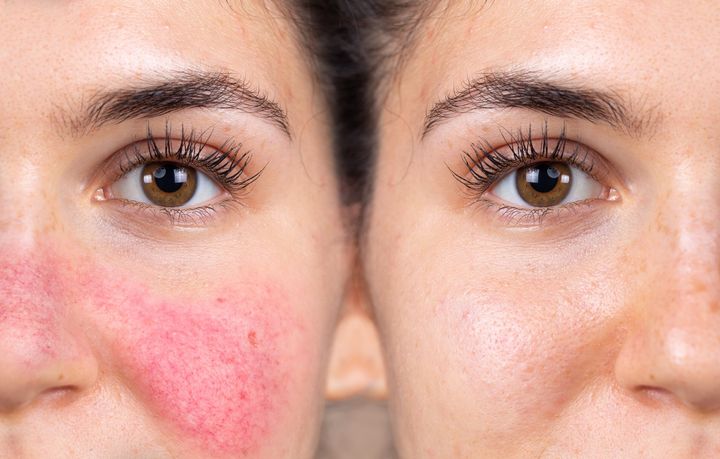Home > Procedures > Medical Dermatology > Rosacea
Rosacea Treatment (Red, Inflamed Skin Condition) – Clearwater, FL
ABOUT ROSACEA
Rosacea, a skin condition that causes the skin to appear red and inflamed, is usually presented around the nose and cheeks. It is often mistaken for other skin conditions but can be treated and managed if diagnosed properly. Clear Skin Dermatology in Clearwater, FL utilizes quite a few advanced solutions, including laser therapy, to lighten skin and decrease the symptoms of this chronic disease. Rosacea can occur on almost anyone, but it's prevalent among middle-aged women with fair skin. This is a skin condition with no true cure, but it can be managed. If left untreated, it can worsen over time, causing symptoms to return and flare up for days or weeks. Rachel Epstein, D.O. and her team of providers will examine your skin for rosacea and develop a customized treatment plan to keep the symptoms at a minimum.
ROSACEA CAUSES
While the precise cause of rosacea is unknown, some experts believe that it's caused by a combination of hereditary and environmental elements. People of Celtic or Scandinavian ancestry seem to have a higher incidence of rosacea. Patients usually have other family members who suffer from rosacea or severe acne. People who are prone to have bad acne have a higher risk of developing rosacea. Scientists believe that immune system overreactions can cause rosacea, especially when the immune system overreacts to a specific bacterium or a mite. These theories, however, haven't been demonstrated to be entirely validated.
There are a high number of factors that could aggravate rosacea since they increase the blood flow to the surface of the skin. These can include alcohol, spicy foods, hot beverages, sun exposure, extreme temperatures, hot baths or showers, stress, embarrassment or anger, strenuous exercise, and certain medications.
ROSACEA SYMPTOMS
Indicators of rosacea can vary from mild to severe. The most obvious sign of rosacea is redness of the face. In most patients, the central portion of the face is noticeably red. The blood vessels of the nose and cheeks can swell and become visible. Other symptoms include red and swollen bumps on the face that looks similar to acne. Sometimes the bumps are pus-filled. The skin can also feel hot and tender to the touch. Roughly half of rosacea sufferers have eye problems, such as dry eye, irritation, and reddened, swollen eyelids. In rare situations, a patient's nose will probably appear enlarged because rosacea can cause the skin around the nose to thicken, which results in a bulbous appearance.
ROSACEA TREATMENT OPTIONS
Even though there is no cure for rosacea, there are a number of treatment choices available, such as antibiotics, that help with inflammation. You can use the medication in a pill form or as a cream, lotion, or gel. Pills tend to be more effective in the short term but can lead to more side effects. If antibiotics aren't effective, acne drugs, such as isotretinoin, have proven to work for some patients. Surgery might be needed in circumstances where the symptoms become permanent, such as enlarged blood vessels or discoloration, that won't subside with other remedies. Laser surgery or electrosurgery can be utilized to reduce the appearance of blood vessels and remove excessive tissue buildup around the nose.
REQUEST CONSULTATION


